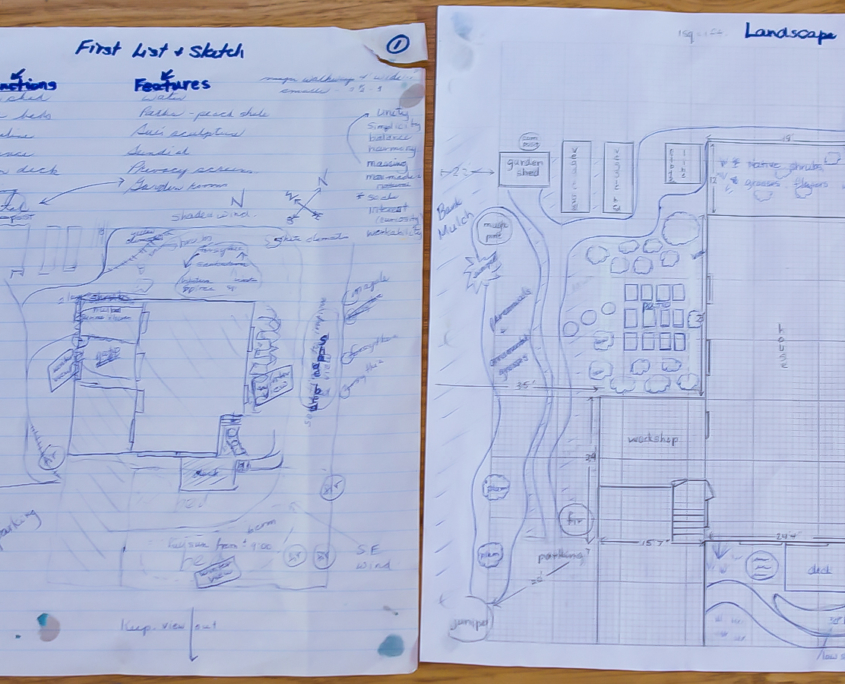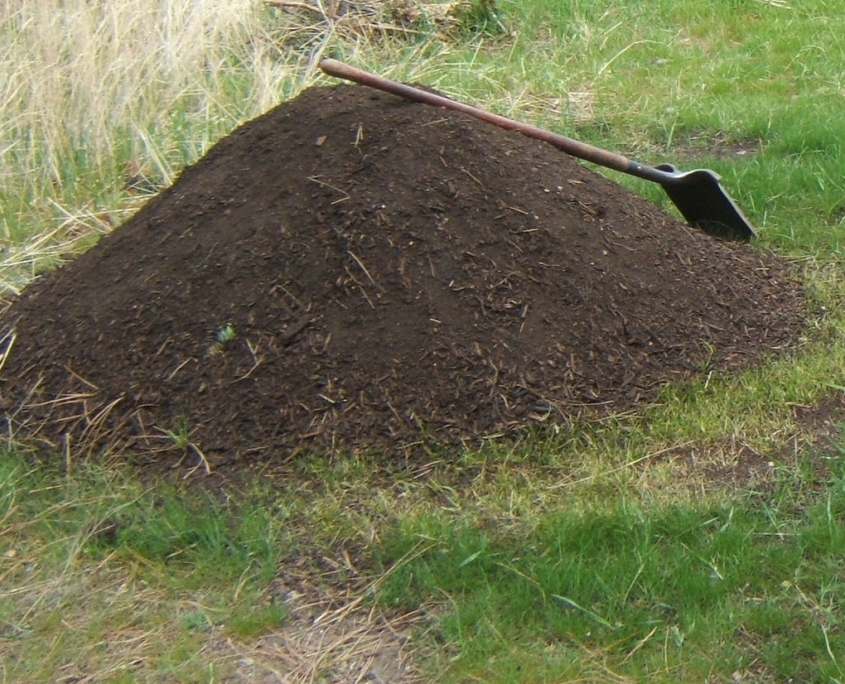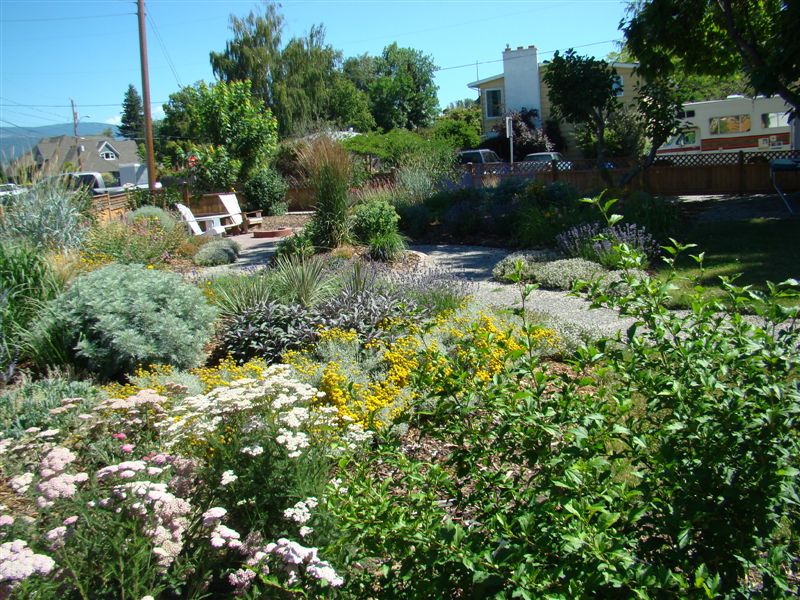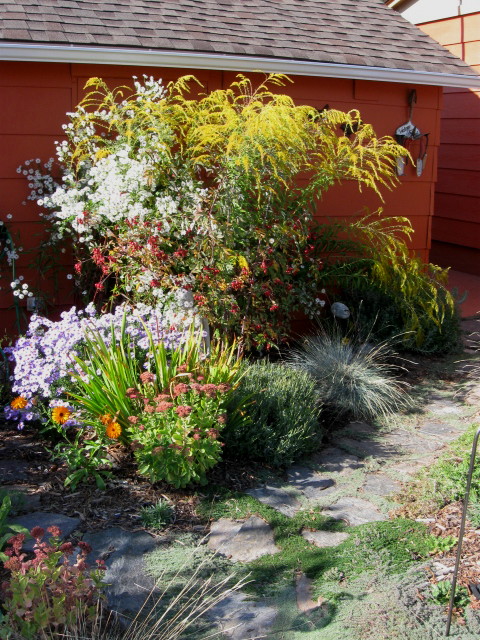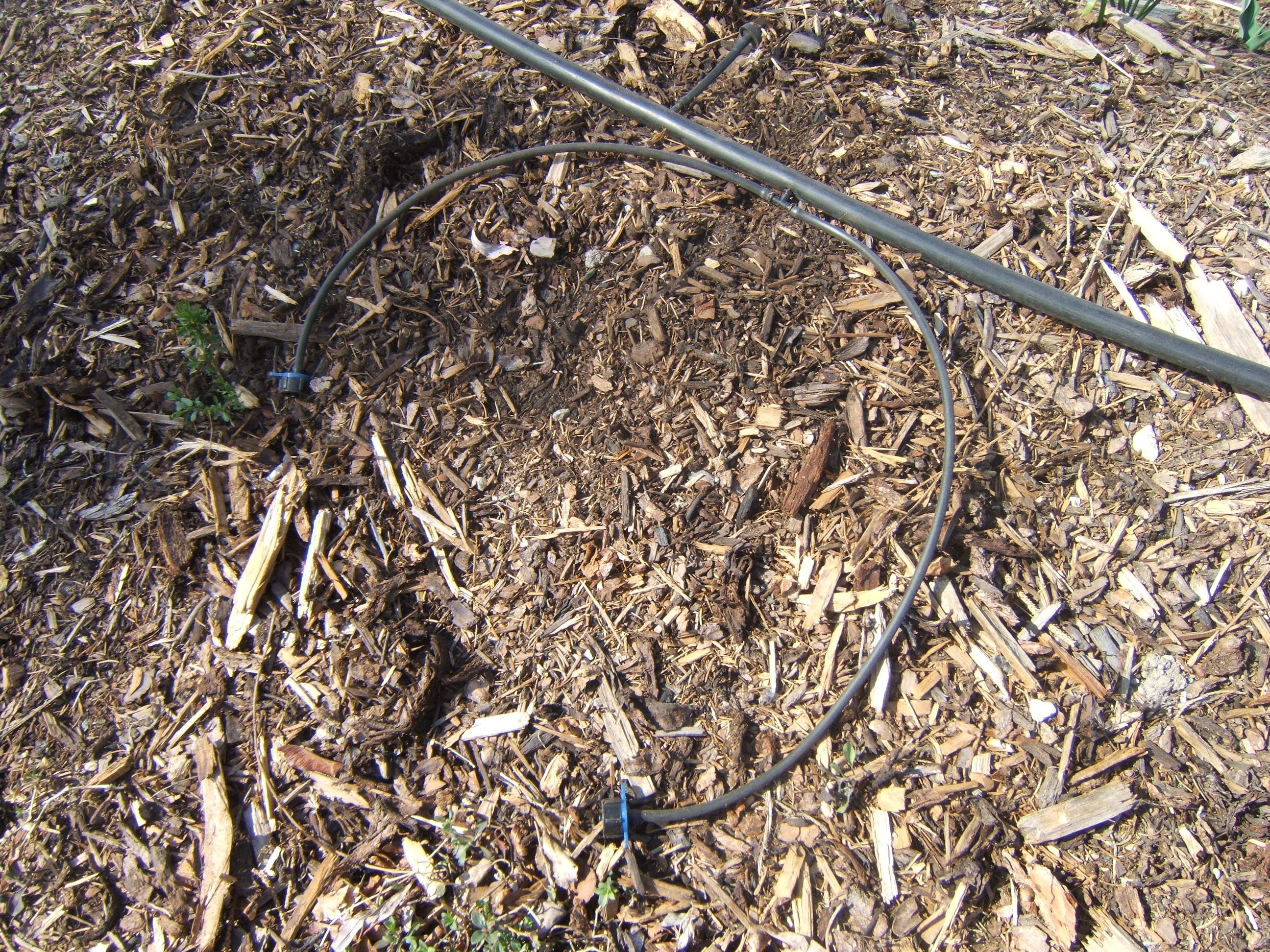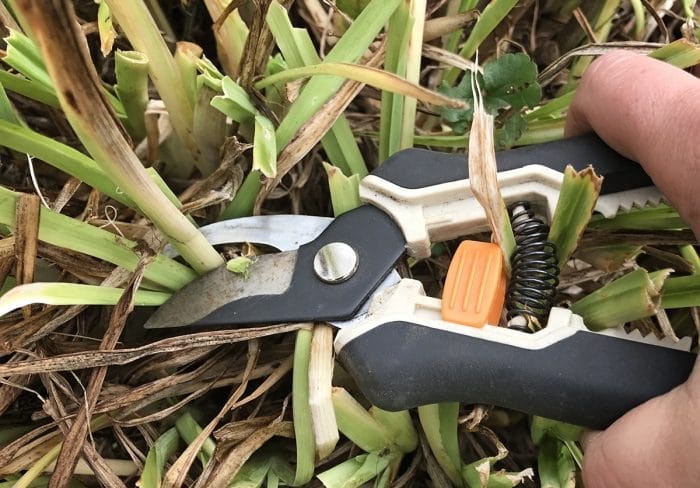What is Xeriscape Gardening?
Xeriscape gardening (gardening in harmony with local (dry) conditions) was developed in Denver, Colorado about 1980. The name comes from the Greek word “xeric” (dry) and “landscape”.
Xeriscape gardening follows seven principles:
- Plan – decide what you want before you begin
- Know and care for the soil – respect soil-dwelling creatures
- Choose appropriate plants – and group them according to their needs
- Have lawn of practical size and care – suitable to your needs
- Irrigate efficiently – and only when needed
- Mulch – the most important principle
- Maintain as needed – a well-planned Xeriscape is usually low maintenance
Step 1 – Plan
Planning can range from sketching a design on a napkin to hiring a landscape designer. It begins with making a list of what you already have in your yard and what you would like to have.
Are there large trees? A driveway? Needed outbuildings? A view you love or would love to hide?
Acknowledge the features that must remain, then describe your dream yard.
Do you want flower beds with season-long colour? A vegetable garden? A place to barbecue and entertain? A lawn for the children and dogs to play on?
Once you are aware of what features you want and need in your landscape, grab the graph paper and make a scale drawing or call up that designer. You’re ready to discover what your landscape looks like on paper.
Step 2 – Know and Care for the Soil
There’s an often-quoted saying that goes, “Life on earth depends on six inches of topsoil and the fact that it rains.” There is much truth on those words, yet we often know very little about the soil we expect to nourish our shrubs and feed our veggies.
We can begin with texture. Soils along the sides of the Okanagan Valley are often clay-silt, formed of very fine particles tightly packed together. In other locations, often influenced by running water or ice-age glaciers, soils consist of coarse sand, gravel or a mixture of those with clay-silt. And a few fortunate gardeners—such as those living on old lake-bottom—enjoy a rich mixture of medium-sized particles called loam. It’s important to know which soil type you are dealing with because each one receives and retains water differently.
Have you discovered (by watering a container of soil and seeing how quickly it sinks in) that you have less than ideal sand or clay-silt? The good news is that both types of soil can be amended by the addition of organic matter: compost, manure, leaves, etc. Organic matter in the soil is often called humous, and increasing soil’s humous content breaks up hard clay-silt and fills in porous sand, enabling each type to receive and retain water more efficiently.
In the dry Okanagan, plant material decays slowly, resulting in soils with little organic matter in them. In order to prepare your soil for optimum plant growth, it’s necessary to add a generous amount of organic material.
Along with improving water retention, humous in the soil plays another important role. Our soils are not sterile; they are living ecosystems. Microscopic bacteria and fungi interact with the roots of plants, providing nutrients and receiving food in return. Larger nematodes and other worms feed on the bacteria and fungi. Arthropods such as insects, spiders and centipedes feed on the nematodes. Birds and small mammals eat the insects. For maximum plant growth that system must be kept in balance, and providing ample organic matter is the easiest way to achieve that balance. (For more information, look up “Soil Food Web” on the internet or read Teaming with Microbes available at your local library.)
Step 3 – Choose Appropriate Plants
Selecting plants that thrive under the conditions in your landscape will increase your chances of gardening success. A wide variety of perennials and shrubs enjoy the Okanagan’s hot summers (as long as they have sufficient moisture) and cold winters (as long as they are not completely dry or too wet).
Visit the Summerland Ornamental Gardens to see how plants perform throughout the seasons. Other sources of plant possibilities are the Okanagan Xeriscape Association website: http://okanaganxeriscape.org/ which has an extensive and illustrated list of plants, and the Okanagan Basin Water Board’s “Make Water Work” website: http://www.makewaterwork.ca.
If you are browsing other websites for ideas, be certain to check which zone* a plant can live in, whether it needs sun or shade, and its water requirements. And don’t be afraid to experiment: even rhododendrons can be grown successfully in this climate if their needs for water and protection are met.
Another route to success is to group plants with similar needs. Put ones that require more water closer to a water source (roses, lilies, echinacea) and make sure that heat-lovers get as much sun as possible (succulents, cacti, most vegetables). Protect tall, slender plants from excessive wind and plant fragile specimens where they won’t be walked on.
Most important: take into account how large each plant will be when it is mature and space your plants accordingly.
* Zones are based primarily on the coldest winter temperatures that a plant can tolerate. Much of the Okanagan Valley is Zone 5, with Zone 6 areas near the lake and Zones 3 or 4 up in the hills.
Step 4 – Have Lawn of Practical Size and Care – Suitable to your Needs
Lawn grass is one of the most water-hungry plants that we grow: nearly a quarter of residential water use in the Okanagan is for landscaping and up to 60% of that is used by our lawns. In the past, we have been accustomed to using grass as a ground cover, often covering an entire yard.
Recognizing that we must conserve water, we need to re-think the use of grass. It does have its uses – as a backdrop to colourful flower beds, as a play space for children and dogs – but a lawn should be no larger than will accommodate those uses.
Today there are lawn seed mixes that require much less watering and mowing than the conventional Kentucky bluegrass lawn of the past, but even if you have that conventional lawn, it is still possible to reduce its demand for water. Here is a quick recipe for water-wise lawn care:
- If your lawn looks hungry, top-dress it with about 1/4-inch of fine compost.
- Begin irrigation in spring when the top two inches of soil is dry. Water deeply.
- Rather than the common practice of watering three times a week for twenty minutes, don’t water again until it’s required, often in ten days. That will encourage your grass plants to grow down towards moisture, and they’ll be better able to cope with drought.
- Cut no lower than three inches, and leave the clippings to nourish the plants they have been taken from.
- Dig out dandelions and other broad-leafed weeds; healthy grass will soon out-compete them.
- Avoid chemical fertilizers, pesticides and mechanical aeration, which all help to compact the soil and make it difficult for plants to thrive.
You’ll discover that you can have a lovely green lawn of the appropriate size with less work and less water.
Step 5 – Irrigate Efficiently – and Only When Needed
During the 4th stage water restrictions in 2003, a Summerland resident panicked, because he was used to watering his lawn for twenty minutes every other day during July and August. He was advised to water deeply on the one allowable day – for an hour or two depending on what his soil could absorb. After two or three weeks he was amazed to discover that when that one day rolled around his lawn was still moist. He was able to go from ten to fourteen days between waterings, his lawn was still lush and green, and he became a convert to watering only when needed.
As the climate warmed and we became aware that water is a finite resource, methods of irrigation have changed from sprinklers that threw more water into the atmosphere than the soil to drippers that place water exactly where it is needed: at the roots of plants.
Micro-irrigation is easy to install, does not want to be buried underground, self-drains in the fall, and requires little maintenance once it is in place. And a garden watered in this way saves up to 50% of the amount required with overhead irrigation.
Certainly, water sprayers are still required for areas of lawn, or perhaps groundcovers, but micro-sprayers applied in the evening or early morning for an hour or so will also reduce the amount required to keep grass healthy.
Step 6 – Mulch – The Most Important Principle
“If you do nothing else, mulch!” is often heard at workshops on Xeriscape gardening.
A four-inch layer of mulch retains moisture in the soil, moderates soil temperature and inhibits weed growth. It encourages fungal and bacterial activity in the soil and, depending on what kind of mulch is used, can also add nourishment to the soil.
Wood chips are a common choice, but there are others: ground-up leaves, grass clippings, nutshells, pine needles (yes, pine needles) or coarse compost (fine compost used as a mulch tends to blow away in our windy valley).
Rock is also a popular choice of mulch, although probably best avoided close to the house on the south and west sides because of its tendency to retain heat. Rocks also tend to attract weeds rather than inhibit them.
Mulching is most effective when irrigation lies under the mulch; overhead irrigation can break down organic materials very quickly. A combination of micro-irrigation and mulch can reduce water use in a garden bed by up to 50%.
And with mulch and the appropriate irrigation, gardeners can grow roses, lilies, even rhododendrons—plants usually thought to thrive only in moist climates. Annuals, vegetables, plants in containers all benefit from a layer of mulch especially in the hottest summer months and they’ll need much less care. Mulch truly is the water-conserving gardener’s silver bullet.
Step 7 – Maintain as Needed – A Well-Planned Xeriscape is Usually Low Maintenance
Once plants are established in a mulched and drip-irrigated Xeriscape landscape, keeping them healthy is usually an easy job.
In spring, cut perennials back to the ground and prune shrubs to remove broken or crossing branches.
Plants have the appropriate amount of water, so grow appropriately. If they show a need, soil nutrition can be increased with a top-dressing of compost, alfalfa pellets, composted manure or a dose of manure tea.
Healthy plants are able to resist most pests and diseases, so monitoring for those can be done while deadheading spent perennials, encouraging them to re-bloom. If aphids or powdery mildew do strike, a spray of 5ml liquid dish detergent to 1L water will smother the aphids, and baking soda, either dry or in a 5ml to 1L spray will discourage the mildew.
Reconciling yourself to visits from deer in the winter and quail in the summer will enable you to relax and enjoy a landscape that is truly in harmony with the nature of the Okanagan Valley.

